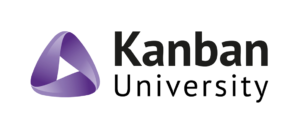The Challenge for Remote Teams
Online facilitation and team management is different. You can’t always see people. There’s little direct feedback. You’re often alone and naked on stage. Creating and sustaining high performing teams in a geographically distributed setting is heavily influenced by some key factors:
- Increasingly independent and self-governed workforce – Work from home has become the new normal. Lack of face to face contact and the many distractions on the home front throw remote workers back onto their own resources, asking them to independently contact and sustain their personal motivations and integrity to their daily work.
- Asynchronous work schedules – Daily demands of home and family and personal habits of when and where creative work gets done means work gets done when a given team member is able to pick it up and work on it.
- Rapidly evolving definition of value – Two weeks ago, a first-class seat on an LA to Boston flight was a jewel. Today the same seat sits empty at less than 40% of the price. Meeting the evolving needs of the market demands a team that is continually assessing and defining value from the perspective of the business.
Keeping a team focused and flexible in this new environment demands a different way of operating, and enabling ownership — one that allows the team to take ownership and encourages acts of leadership from all levels.
What is Kanban?
Kanban is a system for visualizing work and optimizing its flow. A team’s kanban board, the most recognizable aspect of Kanban, is only the tip of the iceberg. The board provides a shared window into how work items are discovered, defined and delivered to customers — a window that surfaces bottlenecks, generates dialogue and catalyzes an “improvement mindset” in the team and across the broader organization.
Kanban Benefits for Remote Teams
Worldwide, COVID-19 has impacted millions of individuals and teams who need to operate in a distributed setting to generate customer value and get work done. Kanban’s organizing principles and practices offer a proven and powerful framework for teams and organizations to combat the challenges of being dispersed, enabling distributed teams to:
- Increase shared ownership of project outcomes
- Become faster and more responsive
- Improve risk management and governance
- Assess and select high-value deliverables
Kanban’s focus on improving problem solving while promoting collaboration and flow puts the distributed team in a position to increase responsive delivery of quality products and services.
Why Kanban Suits Remote Work
With its emphasis on customer value and visual workflow management, Kanban is uniquely positioned to drive understanding and dialogue within the distributed team and to encourage incremental improvements that are motivated by the team’s aspirations and dissatisfactions.
The keys to achieving these results require a new level of understanding as to what constitutes value and how it flows (or doesn’t flow) through the team or organization. This new level of understanding is developed by focusing on the following:
- Visualizing work – Uncovering work and revealing how work items move through the stages of the value stream consistently reveals the impediments to sustainable delivery of high-quality products.
- Value orientation – Understanding customers and the needs that drive work items is key to the “skilful slicing” of the requests into small, chunks of functionality that drive learning and deliver value.
- Managed commitment point – Candidate work items remain options in a state of “discovery” until they are sufficiently understood and assessed with regard to economic impact, thereby reducing risk and optimizing reward.
- Limiting work in progress (WiP) – By placing a constraint on the system, overburdening is avoided, capacity is utilized, and delays are identified and removed, improving throughput of the whole system.
- Evolutionary change – Stepwise change gives feedback within the team and from customers. This amplifies learning and allows the team and manager to incrementally improve in concert with the larger organization.
What makes Kanban such a powerful framework for remote teams is its emphasis on work visualization, shared orientation to customer value and outcomes, and an explicit set of policies that govern how work moves through the team.

How to Bring Kanban to Your Team
Properly adopted and tuned, the organizing principles and practices of Kanban create an environment where your distributed team can flourish and where you, as a manager or team leader, can operate intelligently and efficiently.
To help leaders like you, we have taken the foundations of Kanban University’s basic course Team Kanban Practitioner (TKP) and augmented it to help you develop the skills and knowledge necessary to lead your distributed team through the chaos with clarity and confidence.
Want to learn more about the power of Kanban?
Watch Kert Peterson's webinar recording about how to improve Scrum with Kanban.
*Written by Kert Peterson




